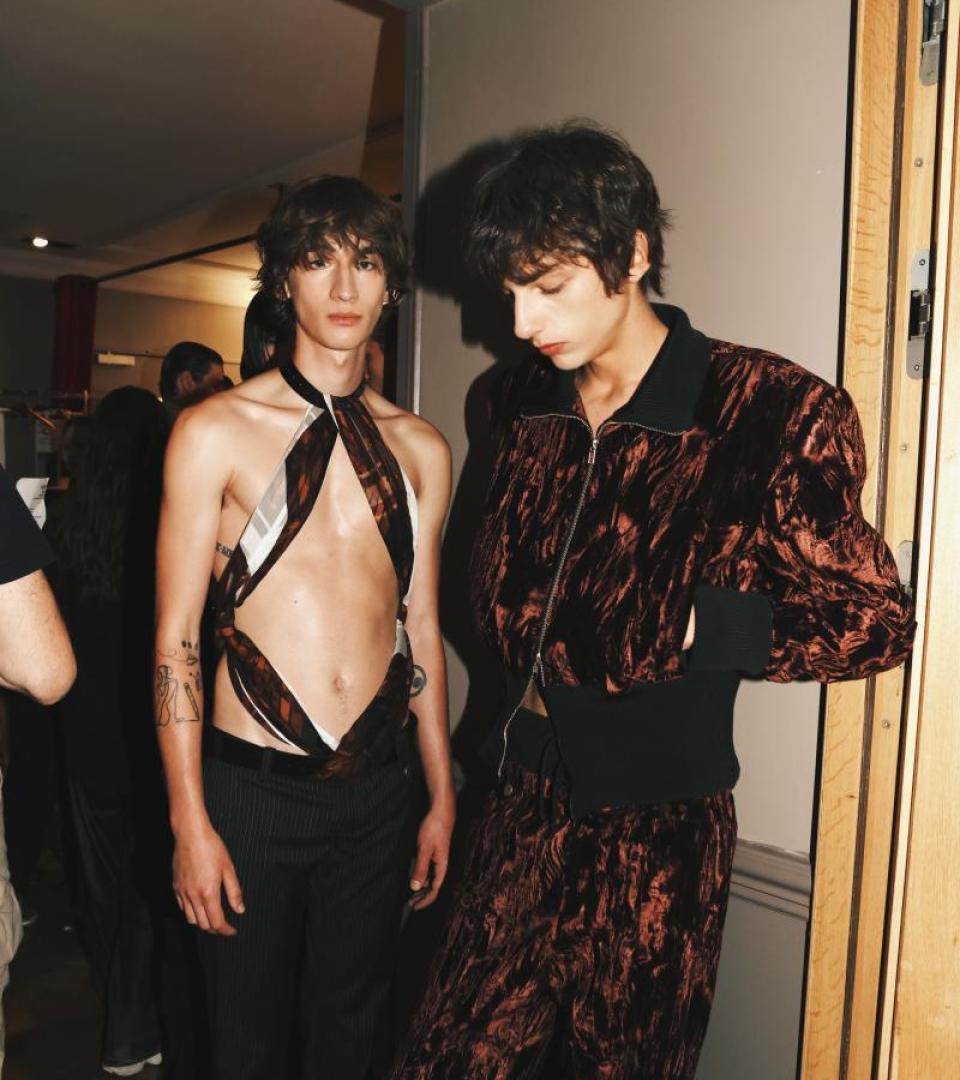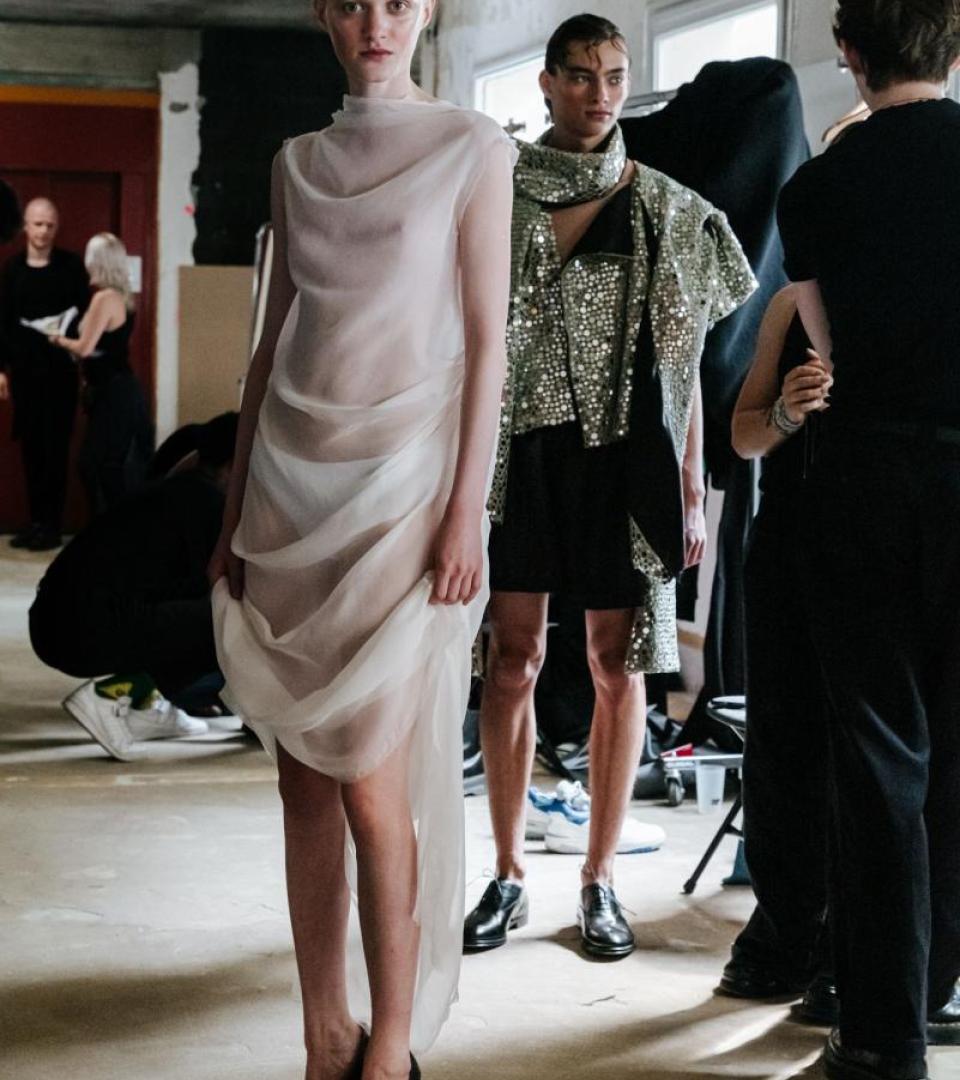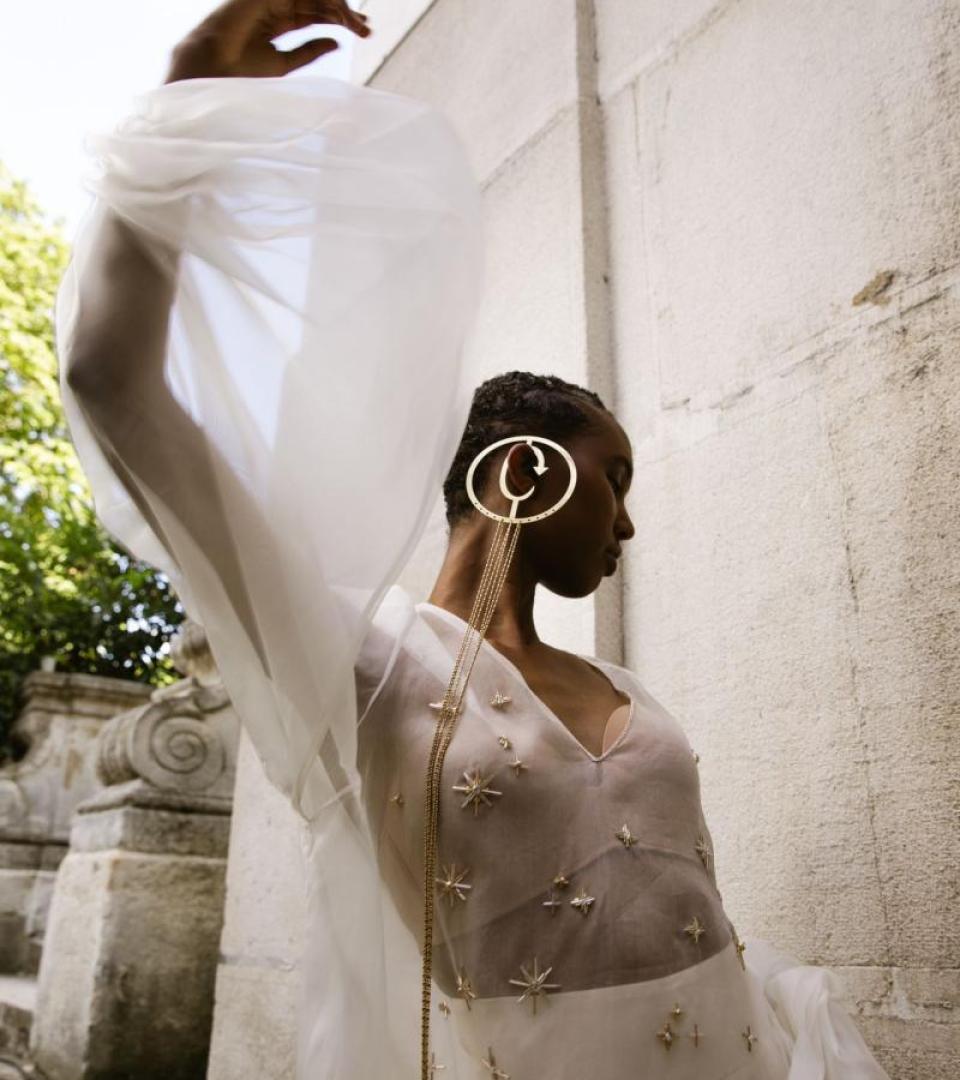Inside Peet Dullaert’s Process
By Paul McLauchlan
In the gilded salons of the Hôtel de Soubise in the Marais, Peet Dullaert staged his Spring-Summer 2024 Haute Couture collection. The Dutch couturier echoed the opulent yet beautiful lightness of his favourite building in Paris across his streamlined body of work. Like couturiers of yore, he typically works straight onto a form rather than considering any lofty inspirations or expansive concepts. The intuition of design interests him much more; the chemistry between colors; the romantic gestures that drapery offers. Looks spanned strict tailoring like evening jackets alongside embellished gowns while abstract forms imparted that instinct guides his practice.
While there are many Old World aspects to his creative process, Dullaert is modern in his approach to sustainability. With longevity at its core, his designs are not only tailor-made to a client’s measurements but to how they live their lives — from the work they do, to how they sit at a desk, to how they hold their mobile phone, to the events they attend. There is no filler in any of his looks; they exist to function in the real world and to do so beautifully. Moreover, he uses new, regenerative fabrics made of “Tencel™ Luxe,” filament yarns that are spun with fibers made from certified wood and orange-peel pulp from Sicily.
“Couture should never be about a trend. It’s beautiful because it’s fashionable in a very intimate way that’s not dictated by the pressure of having acquired something driven by trends,” Dullaert said on a video call.
How important is a starting point when it comes to designing your collections?
We don’t start with a moodboard. In the studio, we share what we feel, what we love. When we start to drape and create a look it’s a story of aesthetics, what we find exciting, what we think looks beautiful, what proportions work, how we can play with shapes. It’s research in the sense of possibilities and how it applies to the body. Sometimes it’s a color that we come across in a fitting. Sometimes it depends on how it moves on the body. To me, it’s very personal and it shows in the work. These intuitive combinations are what we find most exciting.
Why is haute couture so important today?
I find that a fashion designer has a requirement to adapt [Haute Couture] to how we live our daily lives. It’s never about trends. Couture is often seen as this other universe because it applies to certain possibilities. It’s not always for everyone. If couture is in your everyday life, it’s not really about the price tag but it’s what the garment does for your body personally. It also relates to how one sees the importance of culture in a spectrum of art and creation but also the dedication to the many institutions representing it. It goes beyond oneself.
Also, one thing you need to understand about couture is that acquiring something for yourself is one of the biggest gifts you can give yourself. If you have the financial capability to do so, it’s not really about money. It’s about the motive to acquire something in order to present yourself in a certain way. I have met many collectors of couture who always say the reason for acquiring it is that it’s always about yourself, it should always be that way.
What excites you most about being a couturier in 2024?
It’s the freedom, the respect towards a human being, and all of us working together. Creation is never done by one person or designer; it’s how we come together. It’s about finding the right people in your life to work together in order to create a form on a certain level because, obviously, something can be good or not good. You have to reflect and think about the work a lot. The process is amazing.
What was the best piece of advice you ever received?
Back in 2012, when I launched my first collection, I met one of the greatest people who acquires couture and means so much to fashion and couture, generally. When I went with her to fittings, she taught me that when you acquire a piece of couture, you need to know your body because design is about proportions. That’s what makes it so exciting. You have to understand a body rather than manipulate it.



